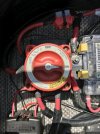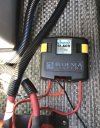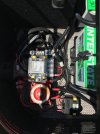Reviving this....
Are you guys just turning off your master power switch at the helm off at night, when going back out the next day? Or are you turning the master off at the helm as well as the switch under the seat?
I figure going home for the weekend ill shut it all down, but what about at night...what are you guys shutting off on day 1 of a weekend
Are you guys just turning off your master power switch at the helm off at night, when going back out the next day? Or are you turning the master off at the helm as well as the switch under the seat?
I figure going home for the weekend ill shut it all down, but what about at night...what are you guys shutting off on day 1 of a weekend




